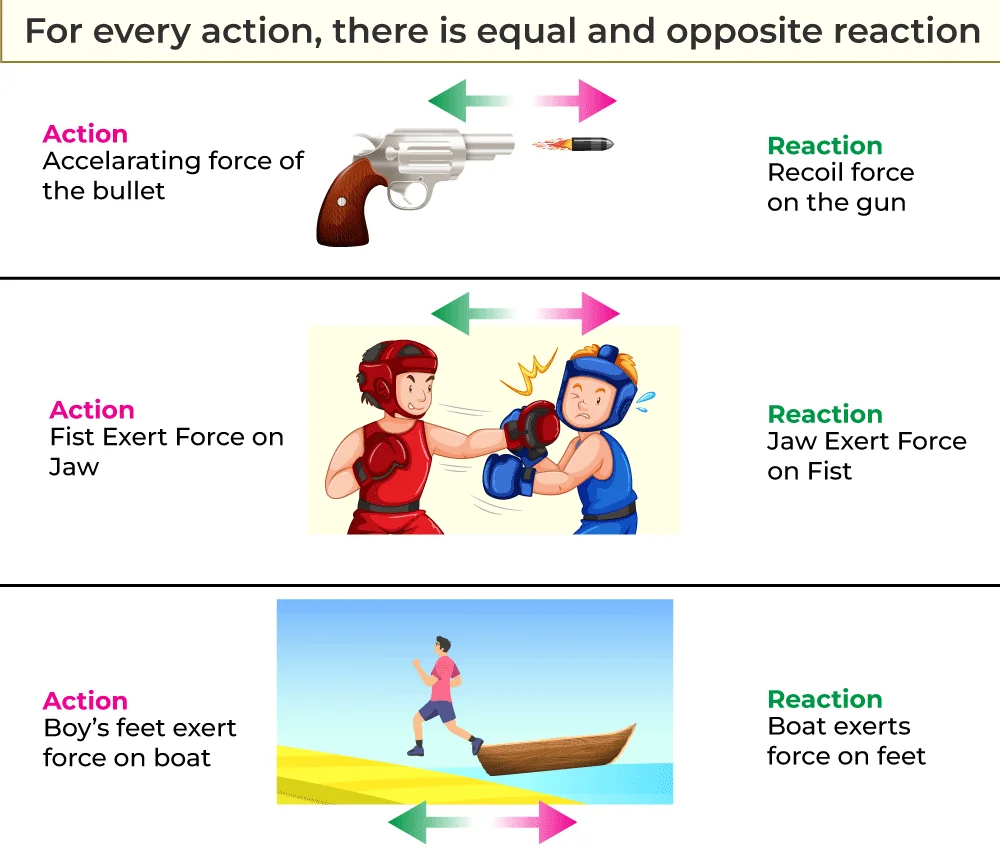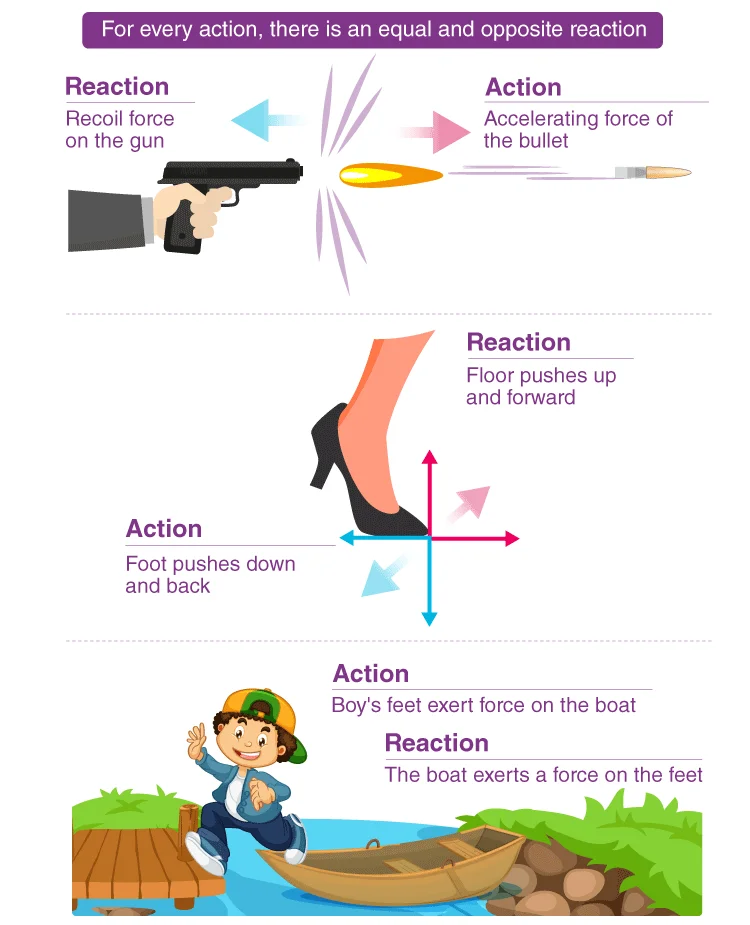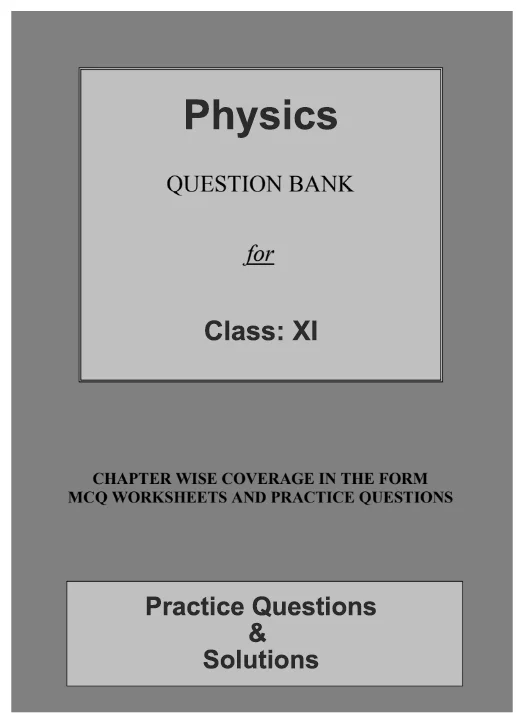In the realm of physics, Newton's Third Law stands as a fundamental principle, shaping our understanding of motion. This law, often paraphrased as "for every action, there is an equal and opposite reaction," carries profound implications that resonate from the tiniest particles to the grand scale of celestial bodies.

What is Newton’sThird Law of Motion?
Newton's Third Law of Motion states: "For every action, there is an equal and opposite reaction." This law describes the relationship between the forces that two objects exert on each other when they interact.
Here's a breakdown:
Action and Reaction Forces:
Action Force: When an object A exerts a force on object B, this force is known as the action force.
Reaction Force: Simultaneously, object B exerts an equal force back on object A. This force is called the reaction force.
Equal Magnitude, Opposite Direction:
The key feature of Newton's Third Law is that the action and reaction forces have equal magnitudes but act in opposite directions. If object A exerts a force F on object B to the right, then object B simultaneously exerts a force of magnitude F to the left on object A.
Pairs of Forces:
The action and reaction forces always occur in pairs. If you push against a wall, the wall pushes back on you with an equal force in the opposite direction. The forces are part of a single interaction and cannot exist independently.
Applicability to Various Situations:
Newton's Third Law is not limited to contact forces but applies to any interaction between two objects. Whether it's the propulsion of a rocket, the recoil of a firearm, or the dynamics of swimming, the law is a universal principle governing the interactions of forces.
Examples of Interaction Force Pairs:
Interaction force pairs, as described by Newton's Third Law of Motion, are forces that two objects apply to each other in a mutual interaction. Here are some examples:

Walking:
When you walk, your foot exerts a backward force on the ground (action force), and simultaneously, the ground exerts an equal and opposite forward force on your foot (reaction force).
Swimming:
As you swim, your arms push the water backward (action force), and the water pushes your arms forward (reaction force).

Landing from a Jump:
When you jump and land, your body exerts a downward force on the ground (action force), and the ground exerts an equal and opposite upward force on your body (reaction force).
Rowing a Boat:
When you row a boat, the oar pushes the water backward (action force), and the water pushes the boat and the rower forward (reaction force).
Flying a Kite:
The wind pushes the kite backward (action force), and the kite pulls on the string, creating an equal and opposite force that allows it to remain in the air (reaction force).
CBSE Class 11th Downloadable Resources:
| 1. CBSE Class 11th Topic Wise Summary | View Page / Download |
| 2. CBSE Class 11th NCERT Books | View Page / Download |
| 3. CBSE Class 11th NCERT Solutions | View Page / Download |
| 4. CBSE Class 11th Exemplar | View Page / Download |
| 5. CBSE Class 11th Previous Year Papers | View Page / Download |
| 6. CBSE Class 11th Sample Papers | View Page / Download |
| 7. CBSE Class 11th Question Bank | View Page / Download |
| 8. CBSE Class 11th Topic Wise Revision Notes | View Page / Download |
| 9. CBSE Class 11th Last Minutes Preparation Resources | View Page / Download |
| 10. CBSE Class 11th Best Reference Books | View Page / Download |
| 11. CBSE Class 11th Formula Booklet | View Page / Download |
Being in CBSE class 11th and considering the board examinations you must be needing resources to excel in your examinations. At TestprepKart we take great pride in providing CBSE class 11th all study resources in downloadable form for you to keep you going.
Below is the list of all CBSE class 11th Downloads available on TestprepKart for both Indian and NRI students preparing for CBSE class 11th in UAE, Oman, Qatar, Kuwait & Bahrain.
SAMPLE PRACTICE QUESTIONS OF SIGNIFICANT FIGURES :
Q1: What is Newton's Third Law of Motion?
A1: Newton's Third Law states that for every action, there is an equal and opposite reaction. In other words, if object A exerts a force on object B, then object B simultaneously exerts a force of equal magnitude but in the opposite direction on object A.
Q2: Can you provide an example of Newton's Third Law in everyday life?
A2: Certainly! Consider walking. When you take a step forward (action), your foot pushes backward on the ground (reaction), propelling you forward.
Q3: Does Newton's Third Law only apply to forces between two objects?
A3: No, it applies to any interaction between two objects. Whether it's contact forces like friction or tension, or action-at-a-distance forces like gravity, the law holds true.
Q4: How does Newton's Third Law relate to the conservation of momentum?
A4: The law contributes to the conservation of momentum. In a closed system where no external forces act, the total momentum before an event is equal to the total momentum after the event due to the equal and opposite forces.
Q5: Are the forces in Newton's Third Law always visible or noticeable?
A5: Not necessarily. The forces can act even if the resulting motion is not apparent. For example, the gravitational force between you and the Earth is always present, but you don't feel it until you jump or fall.

| Class 11th CBSE Physics Chapters |
| Chapter1: UNITS AND MEASUREMENTS |
| Chapter2: MOTION IN A STRAIGHT LINE |
| Chapter3: MOTION IN A PLANE |
| Chapter4: LAWS OF MOTION |
| > Introduction |
| > Aristotle’s fallacy |
| > The law of inertia |
| > Newton’s first law of motion |
| > Newton’s second law of motion |
| > Conservation of momentum |
| > Equilibrium of a particle |
| > Common forces in mechanics |
| > Circular motion |
| > Solving problems in mechanics |
| Chapter5: WORK, ENERGY AND POWER |
| Chapter6: SYSTEM OF PARTICLES AND ROTATIONAL MOTION |
| Chapter7: GRAVITATION |
| Chapter8: MECHANICAL PROPERTIES OF SOLIDS |
| Chapter9: MECHANICAL PROPERTIES OF FLUIDS |
| Chapter10: THERMAL PROPERTIES OF MATTER |
| Chapter12: KINETIC THEORY |
| Chapter13: OSCILLATIONS |
| Chapter14: WAVES |
| Class 11th CBSE Chemistry Chapters |
| Chapter1: SOME BASIC CONCEPTS OF CHEMISTRY |
| Chapter2: STRUCTURE OF ATOMS |
| Chapter3: CLASSIFICATION OF ELEMENTS AND PERIODICITY IN PROPERTIES |
| Chapter4: CHEMICAL BONDING AND MOLECULAR STRUCTURE |
| Chapter5: THERMODYNAMICS |
| Chapter6: EQUILIBRIUM |
| Chapter7: REDOX REACTIONS |
| Chapter8: ORGANIC CHEMISTRY – SOME BASIC PRINCIPLE AND TECHNIQUES |
| Chapter9: Hydrocarbons HYDROCARBONS |
| Class 11th CBSE Mathematics chapter |
| Chapter1: SETS |
| Chapter2: RELATIONS AND FUNCTIONS |
| Chapter3: TRIGONOMETRIC FUNCTIONS |
| Chapter4: COMPLEX NUMBER AND QUADRATIC EQUATIONS |
| Chapter5: LINEAR INEQUALITIES |
| Chapter6: PERMUTATIONS AND COMBINATIONS |
| Chapter7: BINOMIAL THEOREM |
| Chapter8: SEQUENCES AND SERIES |
| Chapter9: STRAIGHT LINES |
| Chapter10: CONIC SECTIONS |
| Chapter11: INTRODUCTION TO THREE-DIMENSIONAL GEOMETRY |
| Chapter12: LIMITS AND DERIVATIVES |
| Chapter13: STATISTICS |
| Chapter14: PROBABILITY |
| Class 8 Link soon |
| Class 9 Link soon |
| Class 10 Link soon |
| Class 12 Link soon |
Leave a Reply